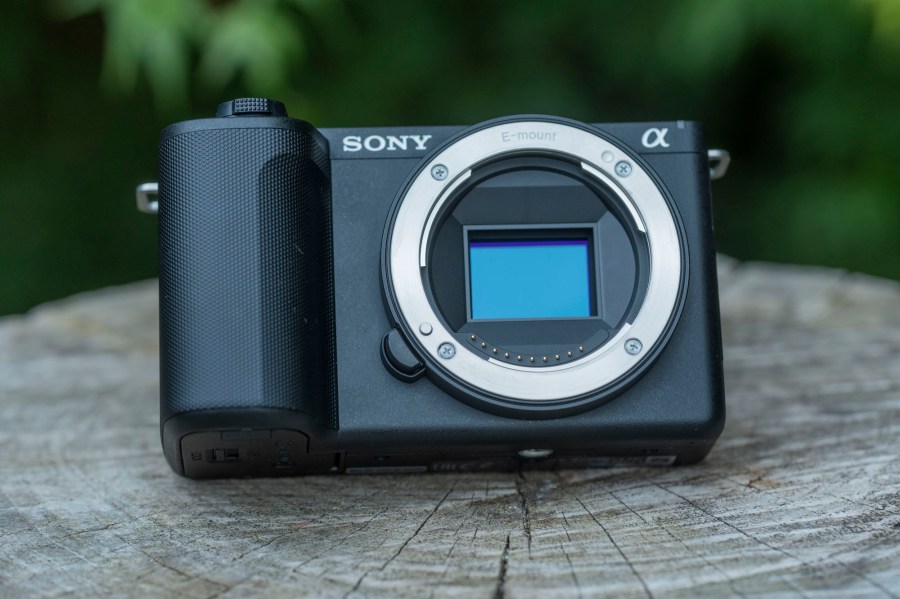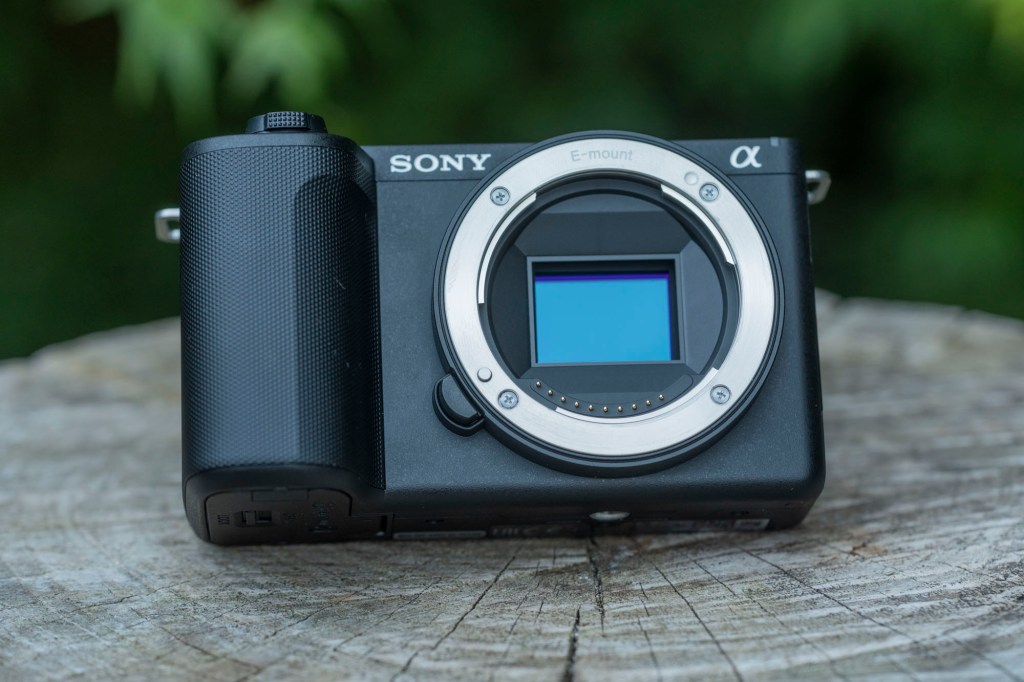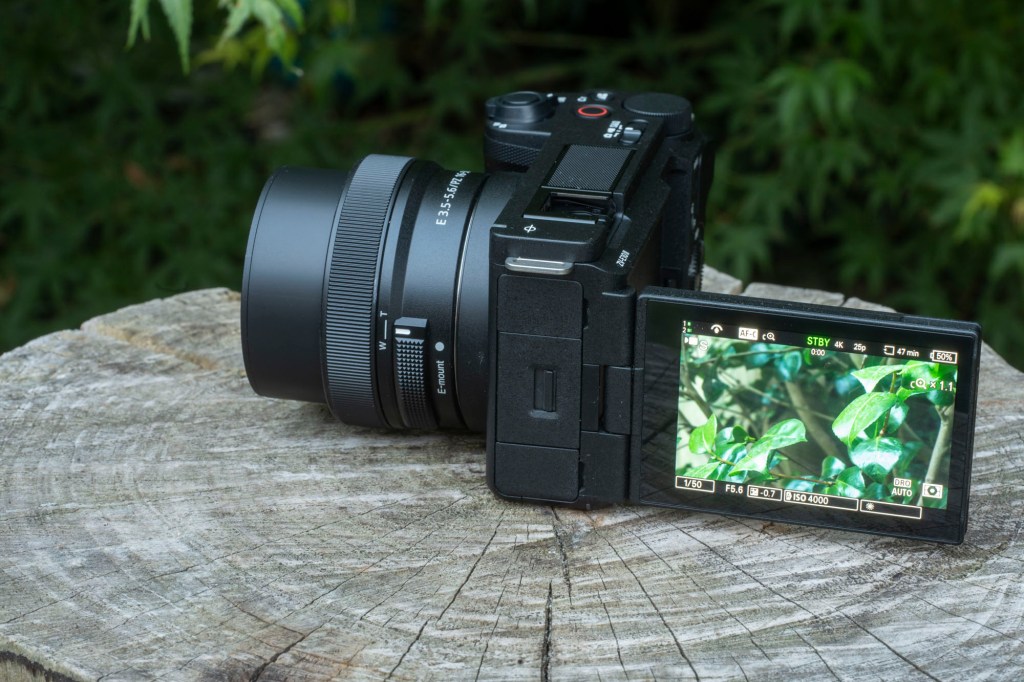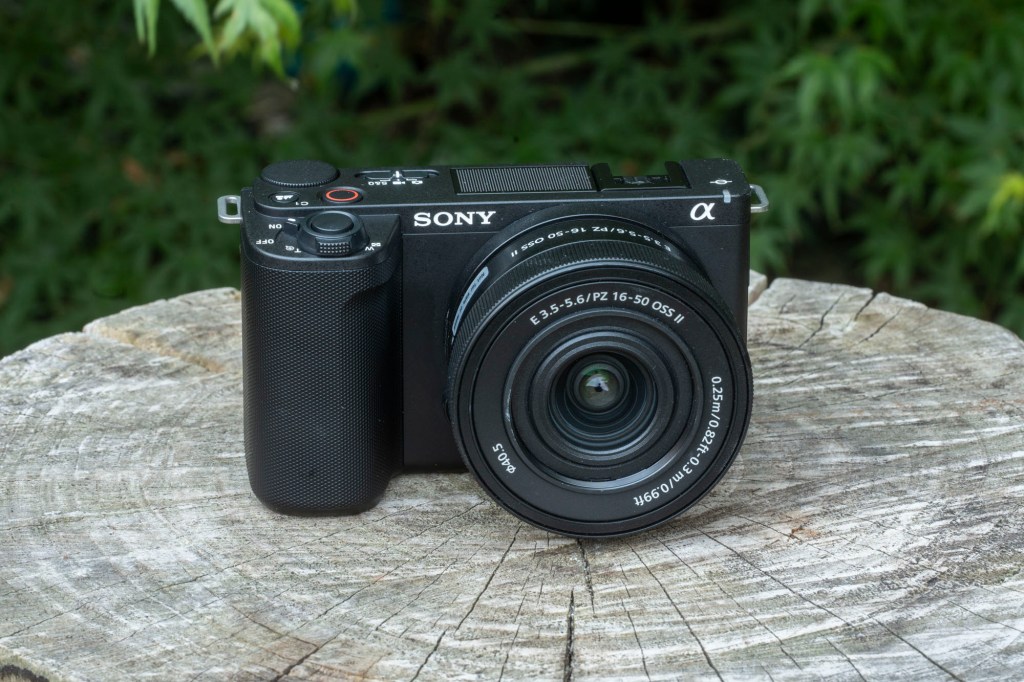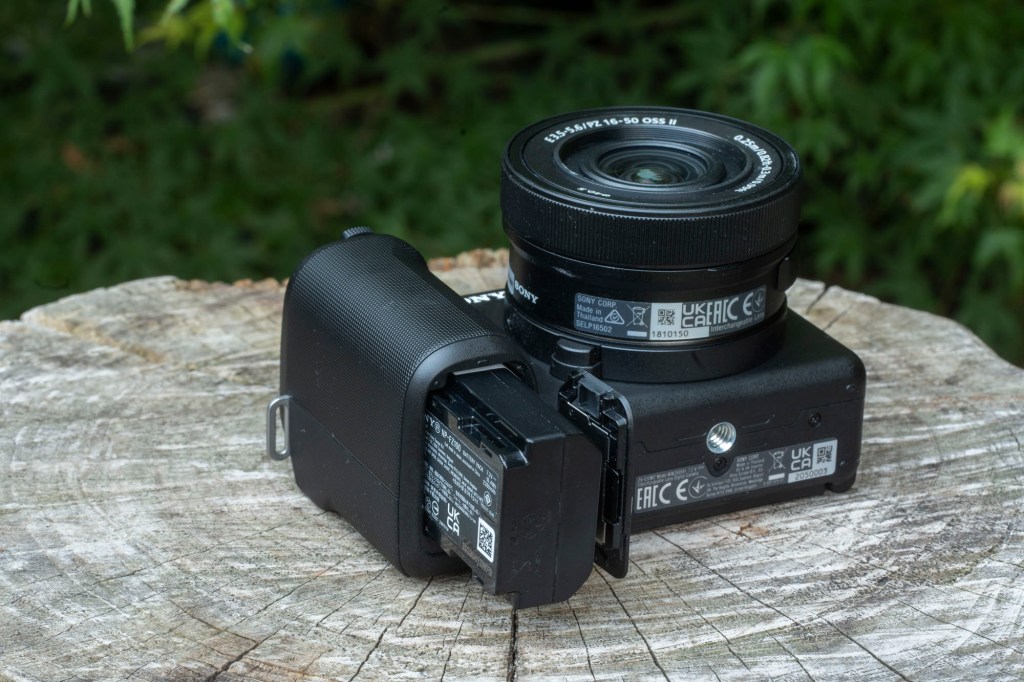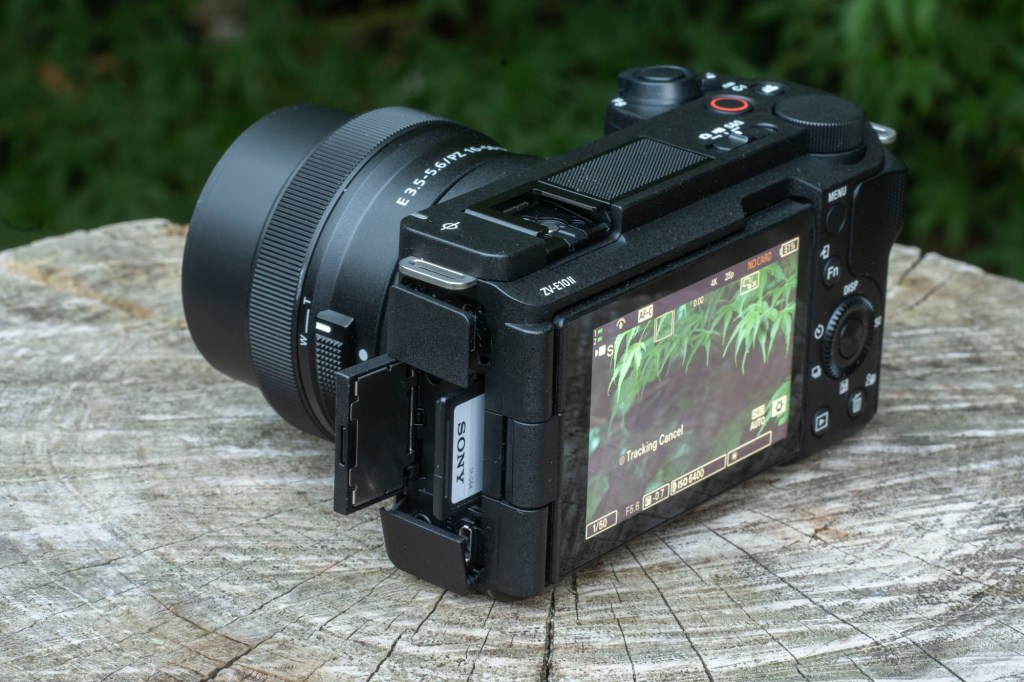Amateur Photographer verdict
Our initial impressions of the new features were really positive, and even though we couldn’t test it in the long run we think it’s worth considering for video, vlogging and travel.- LUT support is great for aspiring filmmakers
- Focus Breathing Compensation
- Full Touchscreen control
- Uses NP-FZ100 Battery
- Improved Grip
- No Auto-Framing feature
- No physical sensor stabilisation
- No Ai autofocus
Now very much part of the furniture in Sony’s camera line-up, the ZV range of cameras is rolling out its second generation, with the APS-C sensor version, the ZV-E10, the latest to receive several updates to bring it up to date with some of the latest technology with the ZV-E10 II. As you probably know, Sony designed the ZV range for video, vloggers and content creators who shoot as much video as they do photographs.
At a glance:
- 26MP EXMOR R CMOS (23.3 x 15.5 mm) sensor
- Sensitivity ISO 100-32000 (standard), ISO 100-102,400 (extended)
- Continuous up to 11fps
- 3in 1.037m dot articulated touchscreen
- AF Points 759 phase detection
- Video 4K 60p, Full HD up to 120p
- External Mic 3.5mm
- Power NP-FZ100, 610 Shots with LCD
- Weight 292g
- Price: £950 with PZ 16-50mm F3.5-5.6 OSS II Lens
The ZV-E10 II has everything that you would expect from the ZV range, including an improved articulated front-facing screen, Background Defocus and Product Showcase modes, and a multi-directional microphone. The camera layout is straightforward and functional, and designed to be less intimidating for those stepping up from a smartphone.
Features
At a glance, the ZV-E10 II looks identical to its predecessor, but there are two significant new features. The first is that the sensor is now a 26-million-pixel APS-C size Exmor BSI CMOS sensor, the same sensor found in the Sony FX30 cinema camera. This sensor brings with it a host of changes that bring the ZV-E10 II in line with most of Sony’s current video-centric line-up, adding features such as LUT import.
One of the main benefits of the new sensor over its predecessor is that, according to Sony, the sensor line readout is twice as fast, resulting in better rolling shutter performance when shooting panning shots. It is probably worth noting at this point that the ZV-E10 II has no mechanical shutter, instead relying on that faster readout to use an electronic shutter. This shouldn’t be an issue for shooting video or for most photographers. Still, you may notice that electronic shutter if you plan on photographing very fast-moving subjects with the ZV-E10 II.
Another benefit of the new sensor is an improved phase detection autofocus coverage, with the new sensor increasing the coverage from 84% to 94% with 759 points. Like its predecessor, the ZV-E10 II can shoot at up to 11fps, with a sensitivity range of ISO 125-32,000 extendable to ISO 102,400.
The second significant change is the move to the NP-FZ100 battery, as opposed to the NP-FW50, which was previously used. This move brings it in line with all of Sony’s other recent cameras and addresses one of my criticisms of the camera when I reviewed it in 2021. The larger capacity of the battery is quoted as providing 610 shots, up from 440, with video recording time up from 80mins to 130mins. Of course we’ll await to see what the real world performance is, but it should be significantly better.
The new battery brings another change: a larger handgrip that houses the battery. This makes the camera more comfortable in use, especially if you are using it with lenses larger than the kit lens.
New features in detail:
- Streaming – Previously the ZV-E10 could only be used as a webcam at 720p resolution. It can now be used at 4K at 30fps or FullHD at 60fps, which is the best possible streaming resolution for many online services.
- Touchscreen – The screen and software have also been improved, so the new ZV-E10 II has full touchscreen control, allowing you to change exposure and shooting settings directly on the screen.
- USB-C and HDMI – Both data transfer, connection to a computer for streaming, and charging can be done via the ZV-10 II’s USB-C connection, which is found on the side of the camera
- Shooting Mode Selector Switch – A switch between on the cameras top-plate switches between photo/video/S&Q (Slow and Quick Video)
- C1/Background Defocus – A custom button on the cameras top plate is, by default, used to switch to Background Defocus Mode, which switches the aperture to one of the widest settings to blur the background.
- Product Showcase Button – When shooting video, Pressing the ‘Delete’ button activates Product Showcase mode, which switches to the closest subject to the camera, which is great when demonstrating or showcasing products for review videos.
Speaking of the kit lens, the tiny PZ 16-50mm f/3.5-5.6 OSS has also received an updated version. It is as diminutive as its predecessor, but it has had some upgrades to its motors to allow autofocusing tracking whilst zooming. It can now also focus at up to 120fps, which is useful if, for some inexplicable reason, you fancy using the lens on the Sony A9 III, but perhaps more useful for shooting 4K 120fps video with the Sony A6700.
One key feature that is missing, as it was on the original ZV-E10, is mechanical stabilisation. Users will be relying on optical lens-based stabilisation, which is featured on the kit lens. Video users can make use of the camera’s Active Stabilisation, which I found works well, but it does use a 1.5x crop of the sensor to provide it with an area to recompose. This obviously impacts the field of view, so it is worth noting if you are vlogging – you will be using that kit lens at its widest 16mm setting most of the time.
As we have seen previously with Sony’s ZV range, there is no electronic viewfinder. As much as I always say that you get used to this, I did find myself going to hold the camera up to my eye to shoot, even when recording video. It is something I miss on a camera, but that said, it is obviously a cost decision, especially given the target users are those stepping up from using a smartphone.
In the years since the ZV-E10 was launched, prices have gone up across the board, and the new camera is no exception. The ZV-E10 retailed for £689 at launch, whereas the new camera is £950 body only or £1050 with the kit lens. Sony has said that the ZV-E10 will remain in the range, and with the current price being £599 body-only, it does look like something of a bargain in today’s world.
With the FX30’s sensor, you would expect an excellent complement of video capture, and you would be right. It can shoot 4K 4:2:2 10-bit All-Intra footage at 60fps, oversampled from a 5.6k sample area. Drop the frame rate to 30fps, and it samples from a 6k area. This should ensure that those 10-bits of colour detail are sharp and accurate, as we have come to expect from Sony video footage.
The ZV-E10 has all of the latest Sony Picture Profile settings, including S-Cinetone, but best of all, Sony has included the LUT import feature. This allows users to import LUTS from their favourite creators and record directly with these colour settings. That is a big win for up-and-coming filmmakers who want to get their footage shot and uploaded as quickly as possible.
For the more novice filmmaker then there is the Cinetone vlog colour mode. This allows users to select a base colour and contrast ranging from Clean, Chic, Fresh and Mono, and then a colour tint can be applied in the form of Auto, Gold, Ocean and Forest. It is a quick way for those starting out to get some good basic colour effects. You can also add black bars at the top and bottom, although these are actually embedded in the footage, which can be a pain if you recompose shots when editing.
Something that is missing, presumably due to processing power and keeping costs down, is the intelligent Auto Framing tools we have seen on some recent Sony cameras. This mode detects people and subjects within the frame and crops into it to keep the subject nicely composed.
Another cost-saving omission is Sony’s AI chip, which is used for subject recognition and autofocus. In the press briefing, Sony said that this was to keep the cost of the camera down and that they were more than confident in the ability of the tried-and-tested autofocus system with Human, Animal, and Bird-Eye AF.
The final video components are the audio interfaces. There is a three-capsule microphone on top of the camera, which comes with a windmuff that slides neatly into the camera’s hot-shoe. There are 3.5mm mic and headphone sockets on the side of the camera and a micro HDMI socket. In addition, you can add a microphone to the Multi Interface hot-shoe, which acts as a digital and power interface for compatible Sony mics, such as the ECM-B1M.
Build and Handling
The only significant change on the new ZV-E10 II is the grip, which is now larger due to housing the larger NP-FZ100 battery. Although I didn’t have a ZV-E10 to do a side-by-side comparison, it certainly felt a lot more comfortable than I remembered from the original camera.
Sony quotes that at 295g, the new camera is an insignificant 4g lighter than its predecessor. Overall, it feels compact and light in the hand, perhaps less significant than the power that is contained within it.
The body layout will be familiar to anyone who has used a ZV camera, with a very simple button layout, but it is one that may frustrate those who are more used to using a Sony Alpha. I particularly found it a little annoying not having a dial to be able to change the shooting mode, say from iAuto to aperture priority. That said, it isn’t a setting that you will be regularly changing, and between the buttons and the quick menu, you can navigate around quite quickly. The main menu will feel familiar to all recent Sony users, with everything found in the same place.
There is a large dedicated record button, and for power zoom lenses, there is a zoom control set around the shutter button. When power zoom lenses aren’t being used, this zoom control can be set to control a digital zoom, which is useful when shooting video.
When it comes to handling everything, it centres around the side-mounted articulated screen. Compared to the previous camera, this has been upgraded with a higher 1.037-million-dot resolution, which is now fully touch-compatible, allowing exposure settings and other menu items to be changed by touch alone.
Initial Verdict
Sadly, we couldn’t spend too long with the ZV-E10 II, so we’ll reserve our full judgement until we can spend a bit more time shooting with it. However, our initial impressions of the new features are positive. The new battery is an obvious change, as it addresses one of our complaints about the first generation of the camera. The resultant enlarged grip is also a positive, as it doesn’t significantly add to the camera’s bulk.
The use of the FX30 sensor and all that comes with it is a big positive. Having that 4:2:2 10-bit footage in a camera of this size and price is good, but the ability to import LUTs and have focus breathing compensation should be seen as a big selling point for aspiring filmmakers.
Not everything is perfect. Having the AI detection autofocus and exposure features would be great, as would the auto framing. As always, an EVF or even the option of using an external one would be good. However, this would have added significantly to the price and would have taken it out of the ZV world and more into that of the Sony A7C line-up.
We look forward to seeing just how the camera performs in the next few weeks when we get the chance to put the ZV-E10 II fully to the test.



Specifications
| Sensor | 26MP EXMOR R CMOS, 23.3 x 15.5 mm |
| Output Size | 6192 x 4128 |
| Focal Length mag | 1.5x |
| Lens Mount | Sony E |
| Shutter Speeds | 30-1/8000sec |
| Sensitivity ISO | 100-32000 (standard), ISO 100-102,400 (Extended) |
| Exposure Modes | PASM, B |
| Metering | Multi-segment, Centre, Spot, Average, Highlight |
| Exposure Compensation | ±5 in 0.3EV Step |
| Continuous | Up to 11fps |
| Screen | 3in 1.037m dot articulated touchscreen |
| Viewfinder N/A | Viewfinder N/A |
| AF Points | 759 phase detection |
| Video | 4K 60p, Full HD up to 120p |
| External Mic | 3.5mm |
| Memory Card | 1x SD |
| Power | NP-FZ100 |
| Battery Life | 610 Shots with LCD |
| Dimensions: | 114.8 x 67.5 x 54.2mm |
| Weight | 292g |

